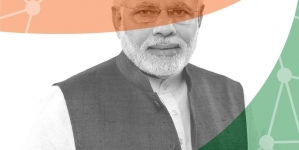-
Tips for becoming a good boxer - November 6, 2020
-
7 expert tips for making your hens night a memorable one - November 6, 2020
-
5 reasons to host your Christmas party on a cruise boat - November 6, 2020
-
What to do when you’re charged with a crime - November 6, 2020
-
Should you get one or multiple dogs? Here’s all you need to know - November 3, 2020
-
A Guide: How to Build Your Very Own Magic Mirror - February 14, 2019
-
Our Top Inspirational Baseball Stars - November 24, 2018
-
Five Tech Tools That Will Help You Turn Your Blog into a Business - November 24, 2018
-
How to Indulge on Vacation without Expanding Your Waist - November 9, 2018
-
5 Strategies for Businesses to Appeal to Today’s Increasingly Mobile-Crazed Customers - November 9, 2018
British Foreign Secretary Reopens Embassy in Tehran
Philip Hammond is in Tehran for a ceremony to mark the event in the first visit to the country by a British foreign secretary since 2003.
Advertisement
Iran is simultaneously reopening its embassy in London.
The assault by student protesters on the UK Embassy and a separate diplomatic compound in Tehran in November 2011 prompted outrage and led Britain to close the embassy’s doors and withdraw all its staff from Iran.
The accord will put restrictions on Iran’s nuclear activities to alleviate world’s concerns in return for the removal of worldwide and western sanctions on the country.
Under the terms of the P5+1 deal, sanctions imposed by the European Union, the United Nations and the United States are to be gradually lifted in exchange for Iran agreeing on the long-term curbs, which are mean to prevent Tehran from developing the capacity to produce a nuclear weapon.
Prime Minister David Cameron called the attack a “disgrace”, closed Britain’s embassy and expelled Iran’s diplomats from London.
He called the embassy and the diplomatic compound a special place that witnessed important moments in history for both Britain and Iran. But it is right that Britain and Iran should have a presence in each other’s countries.
The two countries will have to tackle the common challenges of the region including regional stability, terrorism, the spread of ISIS in Iraq and Syria, illegal drug trading and migration.
On September 24, 2001, former British Foreign Minister Jack Straw visited Iran to seek cooperation after the September 11 attacks in the U.S. and became the first British foreign secretary to visit Iran since the 1979 revolution.
Iranian Foreign Minister Mohammad Javad Zarif speaks during a news conference after a meeting with Russian counterpart Sergei Lavrov in Moscow, Russia, August 17, 2015.
Though the re-opening of the embassy comes after reaching a comprehensive deal on the Iranian nuclear program, initial plans to restore ties with Iran were voiced in June 2014 by First Secretary of State William Hague.
Since then diplomatic relations between the United Kingdom and Iran have been tense and remained at the level of non-resident charge d’affaires.
Accompanying Hammond is a small group of business leaders, including representatives from Royal Dutch Shell, Energy and mining services company Amec Foster Wheeler and Scottish industrial engineering firm Weir Group.
On Sunday, however, the mission briefly became a symbol of how Iran’s relations with the West in general – and Britain in particular – have improved since the nuclear agreement announced in Vienna last month.
“Encouraging trade and investment” will help ensure the success of last month’s nuclear agreement, Hammond said in the statement.
Advertisement
1988 The British embassy in Tehran is reopened.





























